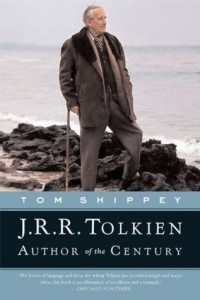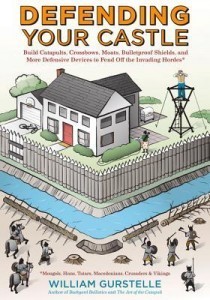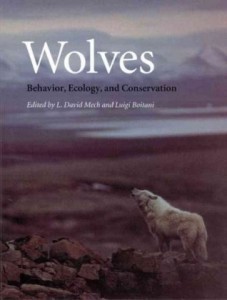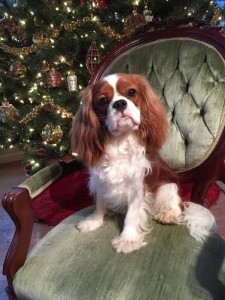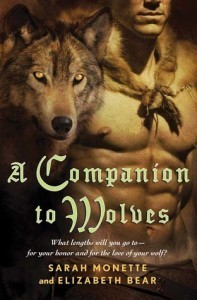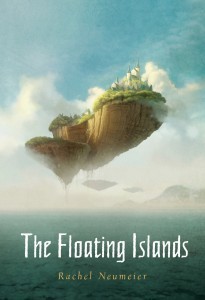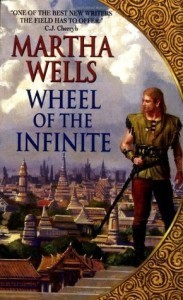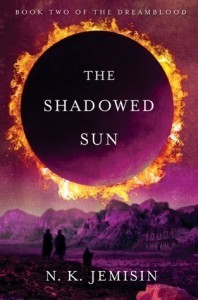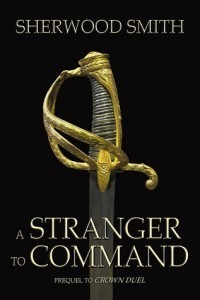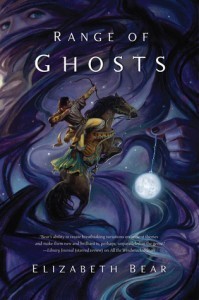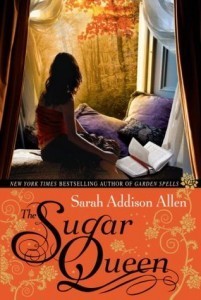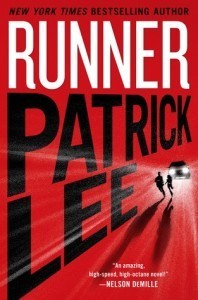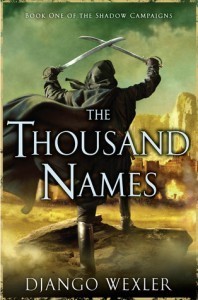Rachel Neumeier's Blog, page 353
January 6, 2015
Recent Reading: mostly nonfiction
So, I’ve been working my way gradually through Tom Shippey’s JRR TOLKIEN: Author of the Century, which is very dense, but interesting.
This isn’t a collection of LotR trivia. It’s a serious analysis of the structure of the books, of the nature of evil in LofR, and so forth. Let me see. The Hobbit: Re-inventing Middle Earth. The Lord of the Rings: Mapping Out a Plot. The Lord of the Rings: The Nature of Evil. And so forth. Mind you, no on has to justify to me the idea that Tolkien is a serious contender for Author of the Century. I agree with that already. I hadn’t realized how vehemently the Literary Intelligentsia hated Tolkien, but it doesn’t surprise me: How can they be sure they’re superior to the hoi polloi if they appreciate a popular book?
Anyway, I’m more than halfway through the book and still plowing ahead. I want to go back and re-read parts of Tom Simon’s Writing Down the Dragon after this.
Meanwhile, much lighter: Defending Your Castle by William Gurstelle
This is such an entertaining book, though mostly aimed at people who have kids who love hand’s-on projects. I mean, Gurstelle really does provide explicit, detailed directions for building catapults and crossbows and so forth. The Crouching Tiger catapult he offers is, he declares, perfect for hurling four-inch water balloons across a typical backyard, but in case of an actual Mongol attack, can be easily scaled up.
Of course part of the point is to include brief history lessons about the Mongols and Tamerlane and Vikings and so on. These bits are brief, but vivid.
I have no actual plans at this point to write a post-apocalyptic story like, say, Dies the Fire. But if I did, this book would be an enormously helpful resource.
Moving on: The most interesting nonfiction book I read lately was Wolves , edited by L David Mech and Luigi Boitani, which is the most current work on wolves I could find.
I wanted to review and update my knowledge of wolf behavior before writing that post on Monette’s and Bear’s A Companion to Wolves, see, because grad school was a while ago and I wanted to make sure I was reasonably current. It turns out I’d read other work that arose from current studies of wolves, so that part was okay, though it was fascinating getting into the details of wolf dispersal (typically wolves disperse about 60 miles from their natal pack, but there’s a very wide range and some wolves will disperse up to 600 miles, which is incredible), mortality (an average of 25% of all the wolves in a population die of natural causes every year, though again there is a very wide range), and hunting efficacy (did you know that a young adult moose is essentially impervious to wolves, even a very big pack? Even an antlerless cow will stand her ground if healthy, and if they can’t make her run, after five minutes or so the wolves will leave to find easier prey).
Oh, and it seems that gray wolves aren’t endangered anymore, which is great. They rebound so fast from small remnant populations that unless a really serious, dedicated effort is made to eradicate them, they’re probably safe. This is great! — Although I’m not seriously keen on having wolves recolonize Missouri, since they will sometimes go out of their way to kill dogs, just as they will kill coyotes. I wonder if a five-foot fence is adequate to keep them out of a yard? As it happens, right now we’re getting black bears colonizing Missouri from Arkansas, which I also feel ambivalent about.
Anyway, the most interesting part, new to me, was the analysis of molecular genetics and anatomy as applied to the red wolf. My impression 20 years ago was that probably red wolves were not a distinct species, but a population of wolf-coyote hybrids. This was a popular hypothesis at the time, but now it doesn’t seem to be true.
Okay, look, the ancestors of wolves evolved in North America, okay, and then some emigrated to Eurasia. Then the two continents gave rise to different species in the Canis genus, with dire wolves evolving in America and true wolves evolving in Eurasia. Then the Eurasian wolves returned to North America in several distinct waves of immigration, one of which constituted the arrival of the gray wolf, Canis lupus, and another of which the arrival of the red wolf, Canis rufus. (This isn’t perfectly certain, but it all looks highly likely, though I’m sure taxonomists are still arguing around the edges.) Dire wolves appear to have been sympatric — shared ranges with — gray wolves, red wolves, and coyotes, all of which appeared at that time to be quite distinct. Then dire wolves were outcompeted, most likely because so many of the megafauna species became extinct and the smaller wolves were more suited to prey on the smaller ungulate species that were left.
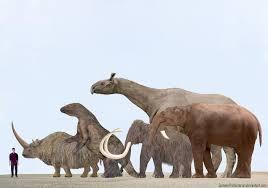 The megafauna were really, really big
The megafauna were really, really big
In the present day, most gray wolves appear to be basically the same genetically, although a handful of subspecies are recognized; red wolves and gray wolves seem to have possibly hybridized in the Northeast, giving rise to Canis lupus lycaon, which on the basis of genetics and anatomy quite likely should be renamed and grouped together with Canus rufus , since it shows more similarity to red wolves than gray.
Okay, now the problem for red wolves is that — look, did you know that the coyote range used to be restricted to the west the continent? That they were restricted to a range that was largely west of Arkansas and Tennessee and Ohio? I had no idea. But the elimination of wolves and the restructuring of the ecosystem by agriculture opened up the east to coyotes, which now, of course, occur from coast to coast. And, here is the problem: Although gray wolves kill coyotes when they can and seldom if ever interbreed with them, red wolves seem more inclined to breed with coyotes. They’re not all that keen on it in general, but they don’t reject coyote mates all that vehemently. And although the red wolf breeding project might have managed to locate and breed true red wolves, and establish populations in the eastern US, I don’t see how anybody is going to prevent hybridization forever if the two species do not avoid it themselves, because coyotes certainly aren’t going anywhere.
So that’s a bit sad. Although also not really, since it’s the kind of thing that must happen all the time, unobserved, between closely related species, and in a hundred thousand years, either way, it’s just a footnote in Canid history.
January 3, 2015
Life with dogs
I just want to mention that there seems to be a rule* that, if one dog comes in lame, lame enough that you feel compelled to carry her up and down stairs and take her out for walks on leash rather than letting her lose in the yard, it will be:
a) Your heaviest dog, and
b) Raining
Poor Dora!
Actually, she went in the x-pen herself and even though it’s open now, she’s still in there. I only closed it to make sure she wouldn’t try to follow me up and down the stairs as I did housework. She will be fine in a day or so, btw. She twisted or hyperextended her front right pastern. This is the sort of thing that happens to one dog or another every year or so, so I know what to check for. On Thursday night, when I was going over her leg, she yipped when I gently flexed the joint. Yesterday she just gave me a worried look when I did the same thing. Today she is almost not lame, but I want to make sure she continues to improve, so no stairs or jumping and leash-only walks today and tomorrow.
Incidentally, if your dog is ever so lame that she carries her leg right off the ground and won’t bear weight on it, you should just take her to the vet right away. I’m sure that is obvious.
* Alternate rule: it’s whichever dog has a show the next day
January 2, 2015
The Incredibles II
So you all probably now that a sequel to “The Incredibles” is on the way, right? I think even I knew that, and I follow movie and tv news less than basically anybody. But there’s a post over at tor.com, all about seven possible directions Brad Bird, the producer, could take a sequel.
Now, “The Incredibles” was possibly the best animated movie ever made, right? As it happens, I just watched it again over the Christmas holiday, and wow, Brad Bird did an amazing, amazing job. The overt story line is fine, the subtext is wonderful, and who knew you could make stretchiness look like such a cool power? It is indeed hard to think of how Bird could handle the sequel so that it would be as good as the first job.
Of the suggestions at the post, a couple are fairly ridiculous. Only the second suggestion — The Incredibles Unmasked — appeals to me or seems at all likely. When we were watching the original movie over Christmas, my brother suggested moving forward and looking at the kids after they have grown up a bit. Maybe that could work. Things I can say for sure, though:
1. I want to see Edna again. She is fantastic.
2. We need to know the limits of Jack Jack’s powers. Right now he seems to be able to a) levitate, b) go through walls, c) change into a demon, d) change into metal, and e) burst into flame. That is quite a spectrum. Is it too much? Can Brad Bird make Jack Jack a real character and not a deus ex?
January 1, 2015
Welcome to 2015!
Another year has turned over! 2015, wow.
I hope this will be a great year for me in terms of completing manuscripts and perhaps starting new ones. Right now I’m working on final (I hope) edits for THE KEEPER OF THE MISTS for Michelle at Knopf, which I hope I will finish today or tomorrow. Then I will immediately switch back to the rewrite of THE MOUNTAIN OF KEPT MEMORY for Navah at Saga. Then I will do the quick revision of the first 100 pages of THE WHITE ROAD OF THE MOON for Michelle and send that to her. By then, I expect Caitlin will have sent me her comments on the current draft of THE WINTER DRAGON, and I will revise that one more time and then send it to Navah. It isn’t due till next spring, but I expect I get it to her before that. Meanwhile, the complete draft of THE WHITE ROAD is due this September, so I’ll need to write the rest of that.
All that and I would still very much like to finish the sequel to HOUSE OF SHADOWS this year. And perhaps start a third BLACK DOG book. So this will be another busy year for me.
What is it that keeps me going with all these layers of rewrites and revisions and so on? It is not the sheer drive to write, believe me. That’s great when it happens, but it’s not something I count on, and it has nothing to do with revision anyway. Partly what keeps me going is a sense of obligation (I have contracts! With deadlines!), but also important are things like this:
Badass Book Reviews’ top reads of 2014
… and all the reviews and comments written by everyone else, all year long. Thank you all.
December 31, 2014
Christmas Puppy
Just wanted to share this lovely picture of Ishmael with you all. He’s still up in St Louis with my friend Deb, and she was kind enough to arrange a nice setting, brush his ears, and take some pictures.
Isn’t my Ish simply the most adorable puppy ever? Yes, yes he is.
December 30, 2014
Recent Reading: A Companion To Wolves and The Tempering of Men, by Sarah Monette and Elizabeth Bear
Okay, this is going to be a long post, because I want to comment on various elements of the book(s) and then comment specifically on the trellwolves. You can always skip that part if you don’t care whether the trellwolves are evolutionarily believable; it’s obvious where I switch from one to the other.
So, A Companion to Wolves was published in 2007.
I didn’t notice this book at all at the time, despite the wolves in the title. Of course, living as I do in an area without bookstores, I seldom notice any title by simply browsing the shelves, depending instead on bloggers’ reviews and so on. However, though I did not much care for her Doctrine of Labyrinths trilogy, I went looking for any other of Sarah Monette’s backlist titles after reading The Goblin Emperor, and by that time I was also keeping an eye out for Elizabeth Bear’s backlist because of Range of Ghosts. The rest of that series is on my MUST READ list for 2015.
From the description and reviews, I had significant doubts about A Companion to Wolves, but with these two authors? I had to try it.
From Publisher’s Weekly (starred review):
Rising fantasy stars Monette and Bear subvert the telepathic-animal-companion subgenre so thoroughly that it may never be the same . . . The meticulously crafted setting and the powerful, often moving rendition of characters and relationships – human and nonhuman alike – result in a brutal and beautiful novel about the meaning of honor. Never blushing as they consider the ultimate sociological, sexual, and moral underpinnings of a “what if” often treated as coy wish-fulfillment fantasy, the authors have boldly created a fascinating world that begs further exploration.”
What sounds great: the meticulously crafted setting and the powerful, moving relationships.
What sounds iffy: telepathic animal companions. I think of that as the My Pretty Pony trope, and it takes a lot to make me accept it these days. Telepathic animal companions are so rarely real animal companions, instead being written as twee pets with no personality and an infinite desire to please their human master. On the other hand, Cherryh got away from that in her Cloud’s Rider world, so I knew it could be done.
What else sounds iffy: “never blushing” sometimes – often? – means that the author ought to be blushing. As you all may have gathered, explicit sex scenes in fantasy are something I usually tolerate rather than enjoy.
The Goodreads reviews are all over the place. Readers love it, they hate it, they think it’s kind of a romance but not really, they think it’s trying to be a m/m romance but fails at that, they note that it is not a romance at all. One reviewer said, “This is pretty much every slash fanfic cliché ever … complete with telepathic wolves and gay Vikings,” which is a catchy phrase and quite a turnoff. Yet other reviewers declare that this book is anything but a porn-fest, and it’s quite clear, if you read any reasonable number of reviews, that the “gay Viking” thing is at best a very simplistic picture of this plot element. Lots of people complained that the names were too hard to remember. Nearly everyone agreed the writing was strong and the world beautifully drawn, which is hardly a surprise with Monette and Bear.
Kristen at Fantasy Book Café gave it a thumb’s up, which matters to me, since we often have similar taste.
The part that sounds great: The names. I like interesting names. Also the great writing and the world.
What sounds seriously iffy: If this book is going to be any kind of fantasy-erotica, count me out.
How the actual story turned out: Really good! I wound up taking two whole days in which I should have been revising my own manuscripts to read the first book and then immediately the second. The third is listed on Amazon with a release date for next fall, and I will probably preorder it to make sure I don’t forget about it.
Okay, to be honest, the names were indeed problematic. Ulfbjorn, Ulffred, Ulfgeirr, Ulfmaer, Ulfrikr, really? There was a list of names in the front of the book, but this wasn’t helpful. What would have been helpful? Well, how about a list of names with brief descriptions, like
Sokkolfr, first named _______, brother to ________ who is a littermate of ________; belongs first to the ________ wolfheall and later joins the ________ wolfheall.
That sort of thing would have helped A LOT to keep the many confusingly named characters straight. As it was, I constantly flipped back and forth in the paper copy of the first book to figure out who a character was. By the second book I had at least the important characters more or less straight, though.
Other than the names, the words were fine. I like having terms like wolfsprechend in the story, because hey, cool word. Mind you, a glossary would indeed be a good idea, but for me the specialized terms did not pose the same problem that the names did. They are clear enough from context, distinctive enough, and few enough in number that they add to the story rather than otherwise. Mind you, although I do subvocalize when I read, difficult-to-pronounce words don’t bother me a bit: I read over them with an approximate, simplified pronunciation and don’t worry about them.
Moving on: plenty of the reviews and comments I read before getting the first book put a lot of emphasis on the sexual relationships between the characters, which as I said is one reason I was hesitant to try the book. But in fact, this emphasis deflects attention from what the authors were actually doing with the story, which was a whole lot more interesting and subtle than I think some commenters realized.
Bonding with wolves changes both the wolves and the men. High-drive or high-emotion moments are shared more intensely between bonded wolves and men. This leads to various complications, as you might imagine.
In particular, after bonding with his “sister” wolf, Viradichtis, Njall – now Isolfr – is compelled, for a short time every year or two, into various sexual relationships that are consensual, but not something he would choose freely without the wolf bond. This is partly where that “gay Viking” crack came from.
But what Monette and Bear have clearly done is to set up – consciously, I’m sure – a society where a) sex roles are very clearly defined, and women are clearly defined as profoundly inferior to men; and b) a young, well-born, intelligent, introspective, heterosexual male is placed in a situation where he must in some ways take the woman’s role. Three or four times during the first book, Isolfr compares his situation to that of a young woman in an arranged marriage. Once he explicitly compares himself to his younger sister Kathlin, who is in fact shortly due to be sent off to a much older man in an arranged marriage.
More than that, Isolfr, because he has bonded with a queen wolf, knows that eventually he will take on the (socially important and respected) role of the wolfsprechend. He explicitly realizes that the social role of the wolfsprechend compared to the wolfjarl is similar to the role that a wife plays in her husband’s household.
More even than that, as we go through the story, Isolfr is repeatedly confronted with situations that make him question the sex roles mandated by his culture – a woman who is “as good a smith” as her husband, but who is not considered a smith, and is that fair? Wolf bitches that dominate the dog wolves. Svartalfar females who are socially superior to the males of their species. Right at the end of the story, Isolfr makes a decision regarding his own daughter that shows how profoundly he has begun to question the role of women in his own culture.
Let me add that this whole theme of subverting gender roles in the Iskryner (Norse) culture looks likely to continue through the whole trilogy, probably gaining steam in the third book. In the second book, The Tempering of Men, we meet Otter, a Brython (British) woman who is currently a slave of the Rheans (Romans).
We don’t meet either the Brythons or the Romans until the second book, which differs from the first in using multiple points of view to more fully show the world, so the story doesn’t feel nearly as intimate. Isolfr is not even a pov character in the second book, and while it was nice to get an outside perspective, I don’t think the second book was as compelling as the first. But it sets up an interesting situation – several interesting situations – which will plainly get resolved in the third book. So the first book is self-contained, but the second is definitely not.
My personal prediction for the third book is that Otter, after rescuing one of Isolfr’s people from the Rheans and being herself rescued, is going to wind up bonding with a wolf – the first woman ever to do so – thus making the whole question of women’s proper role explicit not just for Isolfr, who is already thinking about this, but for his whole society.
Obviously Monette and Bear might have other ideas of what to do with Otter, but if I were writing the story, Otter would definitely have a wolf pup in her near future. For me, the only question would be whether to give her a konigenwolf pup (a queen) or a lesser bitch pup or a dog pup. The greatest subversion of Iskryner cultural norms would occur if she bonded with a dog pup who grew into a big, dominant, ambitious male, but we’ll see.
Okay, about those wolves. Obviously you can skip this part if you’re not interested. I’m going to briefly describe the behavior of normal wolves, then take apart the interesting differences between normal wolves and trellwolves, relating the latter to other known species as I go. But! Even if you are not the least bit interested in working out the evolutionary history of trellwolves, I want to reiterate that A Companion of Wolves is a thoroughly enjoyable story, with a well-developed world, compelling characters – Isolfr does actually remind me a bit of Maia in his strong sense of duty and his generosity – and great writing. As telepathic-animal-companion stories go, it is vastly ahead of the pack (so to speak). People who enjoyed Cloud’s Rider might well love this book. I liked it much better than Cherryh’s book, in fact, because her world felt so much more claustrophobic than this one does. I’m glad Monette and Bear didn’t stop with just one, because I can’t wait to see where they take the story in the third book.
Okay, the wolves are trellwolves, a species that evolved to handle the threat of trolls. Trolls are a terrible threat in this far-north region, and it’s entertaining to think about setting up a situation where the Romans – excuse me, Rheans – run into a big warren of trolls, because I imagine they would immediately declare that the far north is not worth adding to the empire and go home. That might be exactly how we get rid of them in the third book, but who knows?
I enjoyed the trellwolves, and as an added bonus, I think their behavior seems like it could work evolutionarily. Now, Bear did indeed do meticulous research for her Range of Ghosts series, and I’m sure she looked into wolf behavior, so the (extreme) departures from normal wolf behavior that we see in trellwolves can’t be accidental. And I don’t imagine that either she or Sarah Monette is actually an expert in ethology, which is the study of animal behavior from an evolutionary perspective. Nevertheless, just for fun, let’s take a close look at wolves and a few other relevant species and see how they compare to trellwolves.
Ordinary wolves:
The early behavioral research, exclusively done using observations of captive wolf packs made up of unrelated animals forced to live together, gave us a highly misleading picture of normal wolf society. This picture is thoroughly entrenched in the popular conception of wolves and even more thoroughly embedded in fantasy, what with all the werewolf stories that focus so heavily on dominance and aggression. When I wrote Black Dog, I was deliberately using werewolf tropes, with no consideration of real wolf behavior.
For fifteen or twenty years, we have known that actual wolf society does not resemble the popular idea of dominant autocratic leaders who lord it over a linear hierarchy of subordinates. Dominance can be a useful concept, but here it is mostly misleading.
Here is a typical history for a real wolf pack: a young adult individual, male or female, leaves the natal pack during a period of food stress, travels some distance, and meets another dispersing wolf of the opposite sex. The pair finds a good chunk of land unclaimed by other wolves and settles down, aggressively defending their new territory from all other wolves. They have a litter of puppies and rear them. Because food competition is not high in the new territory, the pups stay with their parents, who continue to support them while they grow into yearlings. The breeding pair remains monogamous because the parents are much more sexually attracted to each other than to their offspring and because the territory is vigorously defended against all strange wolves. The next year, they have another litter of pups. The yearlings, not yet sexually mature, remain part of their natal pack. To some extent they are an asset to their parents; to some extent they are being subsidized by their parents. Now we have a pack containing, say, six adults and four pups, but the pair that would be identified as the “alpha” pair are simply the parents of this pack, better termed a “family.” They dominate their offspring by virtue of being the parents and the only fully mature animals in the pack. The younger animals seldom challenge their parents. There is very little overt aggression within this pack; why would there be? The parents are the decision makers not necessarily because they are high-status individuals, but because they are the most experienced members of the pack. Only if food stress becomes an issue are young adult animals likely to be refused access to food, and in that case the young animals disperse, especially if bullied by stronger siblings. If a less-assertive individual disperses and founds her own pack, she will naturally take the so-called alpha role and then she will be assertive. In wolves, the “alpha” temperament does not appear to be inborn or stable.
Obviously there are many, many variations on this theme. Wolf mortality is high. Remove humans as a source of mortality and mortality would remain high, as many wolves are killed by disease, parasitism, and most especially by other wolves. Breeding pairs are most aggressive in defending their territories and most likely to be killed in territorial disputes. If one member of a breeding pair is killed, an outsider is quite likely to join the pack. Sometimes one of the older progeny replaces a parent as a breeding animal. Turnover of the breeding role in wolf packs is high; wolf packs are not usually stable in membership for long periods; few packs last for more than a decade and many for only a few years. However, the point of a wolf pack is to produce dispersing progeny that found other packs, and they are good at doing that. Under good conditions, wolf populations can increase very quickly.
Despite quibbles and ifs, ands, and buts, the term “alpha wolf” and the whole concept of dominance as applied to wolves could be said to be overstated, although one could argue that a more correct term would be “wrong.” As a side note, competent dog trainers have known how screwed up the dominance concept is for a long time. For decades, competent dog trainers have been arguing against the “alpha” concept and asking dog owners to please, please focus on clear communication and clear consequences rather than dominance. I would never allow any trainer to touch my dog’s leash if he was talking about “alpha rolls”. Dogs do not generally get rolled over by their superiors to enforce dominance – they roll themselves over to ask for play, affection, and access to resources, as should be obvious to anybody who has a dog, and especially obvious to anyone who has a pack of dogs. Granted, some breeds are more interested in dominance than others, but the concept of dominance is not a useful lens through which to view dog training – it does not lead to an improved relationship between the dog and the owner, nor does it lead to improving the owner’s control over the dog.
And, by the way, the reason dogs rush through the door ahead of you is because they are excited and want to get out, not because they are thinking about dominance. The reason they pull on leash is because you walk too slowly. Granted, the concept of dominance can be useful in predicting, preventing, and managing aggression between dogs in one household, but, well, we’re opening up another big topic there, so never mind, moving on, back to wolves. Or actually, trellwolves.
Trellwolf behavior:
Trellwolves are much bigger and tougher than ordinary wolves. Also much more intelligent and, you know, telepathic. They think in images and emotions, which makes perfect sense. They hunt the same kinds of prey as ordinary wolves, but they plainly evolved to handle the dangers posed by trolls, which are big, scary, and come in groups, often with wyverns as pets.
Trellwolf packs are dominated by konigenwolves, queen wolves. Queen wolves are high-drive bitches that, as young animals, prior to forming a specific attachment to one male, actively solicit mating from half a dozen or so males during one season. “Alpha” temperament as an inborn trait has been pretty thoroughly debunked for wolves, but never mind. Let’s look at this relatively promiscuous mating system instead.
Actively choosing to breed to multiple males is not a wolf thing at all, but does occur in some species that live in multimale / multifemale groups, such as chimpanzees, bonobos, savannah baboons, and some other primate species, plus a few other species here and there. One persuasive explanation for this system is that, because many adult males could have sired offspring and no male can know for sure whether a particular child is his or not, males are in general very solicitous of all infants.
Among trellwolves, the bigger, more dominant, more driven males fight for access to a female, who then chooses her mates from among the winners. Injuries are very common in these fights, and it is not unheard of for a male to be killed. I am aware of no real-world species where this breeding system occurs. In canids, dholes (Cuon alpinus) and African wild dogs (Lycaon pictus) live in large multimale / multifemale packs. Obviously neither species is all that closely related to dogs, since neither is in the Canis genus. Nevertheless, we can pretty well guess why dholes and African wild dogs live in very large packs: it is probably because of the threat posed by tigers (for dholes) and lions (for African wild dogs). One can therefore imagine trellwolves needing larger packs because of the danger from trolls.
As a side note, the extreme male bias seen in trellwolves has no parallel that I’m aware of in the real world – except in African wild dogs, where we see a similar male bias in some packs, so that packs may consist of quite a few males and one or a few females. Young African wild dogs often produce a more male-biased litter than older females, and the reason seems to be that males remain with the natal pack longer than females, so it pays to have sons when establishing a new pack; and because females compete for reproductive opportunities, so the breeding female is better off producing sons who will help and not compete with her.
In trellwolves, this male bias is supposed to be because trellwolves are “warriors” and must fight the trolls, though in a population where individuals are often killed by anything, it makes A LOT more sense to have more bitches than dogs, since it is bitches that limit population growth, not males. Instead, I suspect that the male bias arose because of the intense female-female aggression between konigenwolves: if progeny are at all likely to remain in the natal group, then sons will not compete with their mother for reproductive opportunities the same way that daughters might.
Anyway, in both dholes and African wild dogs, packs form when a group of female siblings joins a group of male siblings. Then one female and one male become the breeding pair and offspring remain in the natal pack for some time before dispersing. What I want to particularly emphasize is that there is almost no obvious aggression within packs of either dholes or African wild dogs, and as far as I know, it isn’t clear how the members of the pack sort out who is going to take the breeding role. Certainly the males do not try to kill each other every time a bitch goes into season. That would be insane, if large pack sizes are important for group defense, which they are. It definitely seems insane for trellwolves to behave like this, so this is by far the least believable aspect of their behavior. Though if males in a pack are unrelated to one another, and unable to form useful alliances, and if their breeding success is strikingly dependent on succeeding in those fights, then I suppose it might work. Why the males would be unrelated to one another, I have no idea.
Except one. Because when trying to explain inexplicable behavior, the saving grace of the trellwolves in A Companion to Wolves is that they are not living under natural conditions. They are living in packs with men. So it’s not at all clear what happens in a wild trellwolf pack. Maybe in a wild pack, groups form the same way they do in wolves or African wild dogs and there is much, much less intragroup fighting, whereas all the movement of men (and their bonded wolves) between groups strikingly increases serious aggression between males. Maybe in wild packs, males work out their alliances and coalitions beforehand, as they do in chimpanzees, so that there is much, much less aggression between males when a female comes into season. Maybe it is the presence of human men who destabilize relationships that ought to be stable. But the way konigenwolves are thought to incite fights among the males so that they can best evaluate the males argues against this interpretation. So I don’t know. It seems to me a bitch would be perfectly capable of evaluating males during troll hunting expeditions, so if the bitch gets to choose her own mate(s) – which she does – why would she risk her potential mates in unnecessary fighting, when bad luck could take her preferred mate right out?
We may never know. But it’s fun to put trellwolf behavior in context and speculate.
Well, I think it’s fun.
Has anybody else read these books? What did you think?
December 29, 2014
The best book covers of 2014, really?
The New York Times offers this column about great book covers from 2014. I saw the link in a post over at Book View Café, which btw is having a 50% off sale right now, if you didn’t get enough book for Christmas. (I never get enough books ever, so I need to scan through their offerings.)
Anyway! Pati Nagle at BVC says, “Of these twelve covers, I found two attractive, two others interesting, and the rest told me that I probably would not like the books.”
In contrast, I didn’t like ANY of the book covers in the NYT article. Not one. I agree with Pati Nagle about the lack of genre signals, except that right there is a signal that the book is probably nonfiction or literary, and in neither case am I likely to be interested, though of course there are a few nonfiction topic areas where I would be. Animal behavior, psychology, linguistics, I don’t know, a few others, I guess.
Of the six covers picked out by Nagle, I like GARDEN SPELLS by Sarah Addison Allen — Allen often has very nice covers — GREEN by Jay Lake, and LADY OF ASHES by Christine Trent is okay. I definitely prefer genre covers, and though so many genre covers feature people, especially fantasy covers, I often particularly like covers that emphasize landscape over figures.
Here is my favorite cover ever:
Honestly, when I eventually get rights back and bring this out myself — as I assume will happen one day — I have no idea what I’ll do about the cover. How could I possibly improve on this? Thumbs up or thumbs down on keeping the basic idea but adding a dragon? A semi-transparent opalescent dragon with feathers?
Six word stories
Over at tor.com, a lot of entertaining attempts to write stories in exactly six words.
I would say that nearly all of these are attempts at a good “hook”, but mostly they do not work as stories in the way that
For sale. Baby shoes. Never worn.
works as a story. I expect the baby shoes were the inspiration for the six-word-story idea.
Here’s a good one, very similar to the baby shoes:
Invincible helm, dwarf made. Slightly dented.
This one might be my favorite:
Time machine, not yet previously owned.
Click through and pick your own favorite!
December 27, 2014
Favorites of the Last Five Years
Here’s a great idea from Brandy at Random Musings of a Bibliophile: Favorite Books of the Last Five Years. If you’re ambitious, I suppose you could do it as Favorite Books of the Decade! I, on the other hand, have only been keeping track of books-read for about three years, so it’s tricky to go back further than that.
I love most of the books on Brandy’s list, but books blur together for me in time, so it’s hard to remember when I first read a book. It’s easier for me to do this list:
FAVORITE AUTHORS DISCOVERED IN THE LAST FIVE YEARS
And even this may be more like the past three years. But it’s still easier than picking out specific books. I suppose it’s not surprising that some of the authors on my list only debuted recently, while others, no matter how new-to-me, have been around for a while.
Anyway, top ten new-to-me authors from the last five years (or so), in the order they occur to me. In order to appear on this list, I decided it was important that a) I have read at least three books by the author, because how else can I know the author consistently suits my taste? And, b) never have read a book that I really disliked by the author.
Martha Wells. You all know how I feel about Martha Wells’ books! I couldn’t really get into the Star Wars one, RAZOR’S EDGE — I’m simply not very into the Star Wars world and never have been. Maybe I’ll go back to it eventually. But her original-world work suits me right down to the ground.
Andrea K Höst. Of course. I still think wistfully of my Höst blow out two years ago, when I read almost all her books one after another. You know what would make a GREAT TV series? The Touchstone trilogy. Start when Cass gets rescued by the Psychic Space Ninjas, then insert the lost-in-the-woods bit as flashbacks as you move forward with the story. That ought to hook viewers right away and keep them hooked. I don’t know actors, so I can’t cast this series. Who would make the world’s best Kaoren? Anybody got any ideas?
NK Jemisin. Her books suck me right in. My favorite is in fact the second of the Dreamblood books, which is why I’m picturing it below. I’m a bit tired of the first-woman-to-whatever plot element, but this was an exception.
Sherwood Smith. Hard to believe I’d never read anything by her before, what, last year? I still have a lot of her backlist on my Kindle / TBR shelves / in audio format / on my wishlist. My favorite so far is definitely A STRANGER TO COMMAND.
Laura Florand. As you all know. I particularly the cover of THE CHOCOLATE ROSE.
Elizabeth Bear. Which is pushing a point, since I have only read one (1) full book by Bear: RANGE OF GHOSTS. I’m really looking forward to reading the sequels, which look at me when I walk by my TBR shelves. But I loved A COMPANION TO WOLVES, which she co-wrote with Sarah Monette, and I loved the Shadow Unit series, so there you go.
Sarah Addison Allen. Another author that I seem to have known forever. No. I believe I discovered Allen in 2012.
Sarah Rees Brennan. I’ve only read the Demon trilogy, but whoa. I’m dying to read more by Brennan, hopefully in 2015.
Patrick Lee. His SF thriller series starting with THE BREACH is one of the best, if not the best, thriller I’ve ever read. I haven’t read RUNNER yet, but I really need to!
Okay, that’s nine! Can I get to ten? Let me think.
Fine! What good is a rule if you can’t break it, right?
Django Wexler. I’ve only read one book by him, but hey. I really loved it, and I’ve heard good things about the sequel. So.

